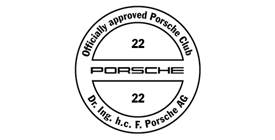No, because the dual port wastegate that you have as part of your Promax Level 2 kit already does everything that the boost enhancer does, and more.
The boost enhancer is just a clever way of tricking the original wastegate into behaving better. The DP wastegate eliminates the need for it.
If you think the lag on your car is excessive then it is possible, even likely, that you have quite a lot of leaks here and there in the induction and boost control systems. It is vitally important for all these to be chased down and eliminated, otherwise you are in danger of running the engine lean and blowing it up. Checking this involves pressuring the system and eliminating every leak. The last one I had was around the idle stabilisation valve, which was a new one. The folk at Promax are expert at finding and eliminating 944T air leaks and can do so far more quickly and easily than I can, so I have them specifically test and check the whole system every time they see the car - usually once or twice a year. This is something that from experience I don't trust all Porsche specialists to get right - most of them spend most of their time working on normally aspirated cars. You need someone who lives and breathes turbos: there are a few of them around.
Another possibility is that the turbo bearings are not in the greatest condition, and it's not spooling up as easily as it should.
On my car there is solid boost by 2700 RPM, accelerating in third or fourth gear. So the actual boost threshold is very significantly reduced from where it was in the factory setup (which is why the mapping has to be so different).
However, the 26/8 turbocharger is inherently a big heavy lump of rotating metal and it does take a while wind up to full chat so these cars will always have a softer throttle response than you would get with a modern lightweight VG turbo.
A fairly small capacity highly turbocharged engine with a fixed geometry turbocharger is necessarily going to have a steep ramp of power onrush once it passes the boost threshold. Even if you eliminated all actual lag, you would still be experiencing a very steep set of torgue and power curves around the boost threshold.
The transition from full throttle off boost at 2500 rpm (around 65 bhp) to 3500 rpm on-boost (around 180 bhp) is always going to feel very different from the way a normally aspirated car picks up.
By the way, you are using good quality high octane fuel, I hope? The Level 2 map is set up for either 97 or 98 octane as a minimum (can't remember which) and if it is not run on the right fuel the car will be pulling back the timing during the boost transition which will not make it feel great. The cars can be run safely on ordinary petrol if you need to get to the next fuelling point and stay off boost, but they really need good fuel to be run properly.









